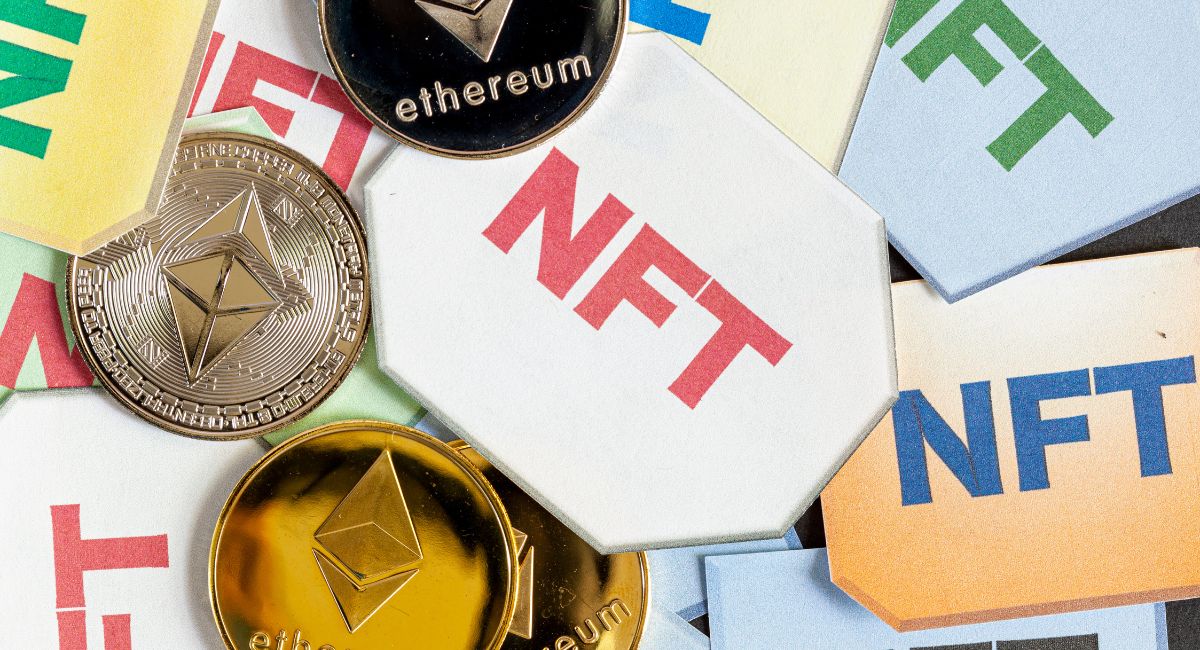Top 5 Questions Answered About NFTs In Supply Chain
Blockchain technology has been making headlines lately. This is the same technology that fuels cryptocurrencies top among them Bitcoin. Many people might be familiar with Bitcoin but not with the technology behind them. That is soon to change because blockchain technology is infiltrating every area of our lives. One aspect of the business that is likely to sustain significant disruptions due to the blockchain is the supply chain. But what about NFTs in supply chain? Know the basics about the use of NFTs in supply chain.
Why should companies use tokens that can’t be used to buy other things in their supply chains?
NFTs in supply chains are more open and efficient, which can save several billion dollars. This is another way that Web3 technologies can be used in the real world. Supply chains are an important part of every business. Most businesses, from fast-moving consumer goods (FMCG) giants to local brands that sell directly to customers, rely on efficient and reliable supply chains to get their products and services to customers. Even though supply chain networks are an important part of how businesses work, they are not very efficient on a global scale.
One of the most important ways blockchain technology has been used is to make tracking items in a supply chain easy. HSBC and other banks have tried out this part of the technology in the context of trade finance. In this use case, smart contracts and blockchain infrastructure layers like Ethereum and Solana are more important.
Nonfungible tokens (NFTs) as a technology paradigm were not necessarily made to change the way supply chains work, but they can make a big difference in this area. NFTs can serve as “digital twins” of real-world goods and make it easier to track goods through supply chains.
Here are some numbers, statistics, and stories to help you understand what’s going on.
- Due to a lack of visibility, 49% of businesses have no idea what’s going on at key points in their supply chain.
- In 2018, it cost global brands more than $232 billion to deal with fake goods.
- In industries like pharmaceuticals, the fake market could be worth nearly $200 billion a year.
The numbers above show how big the problem is, and NFTs can help fix these inefficiencies. In addition to this, there are other interesting use cases where blockchain and supply chain meet, which will be talked about later in this article.
What do non-financial transactions do in the supply chains?
Tracking, settling, and documenting the supply chain in real-time can not only help businesses save time and money, but it can also help them get better financial products they can use for their operating capital. NFTs make a digital record that can’t be changed and is open to everyone. This gives the supply chain industry a clear trail so that everyone in the ecosystem can see everything. So, from making the raw materials for goods to putting them on a website or in a store, using NFTs will make it possible to track them and help with supply chain management.
When linked to real-world goods, phygital NFTs have shown to be very useful. Using NFTs to track a good or manufactured product all the way back to where it came from can give the product more credibility. It can also give people a way to find out where the product they are looking at came from and choose one based on where it came from.
Aside from being able to track products, NFT-gated procurement and NFT-gated warehousing will give data scientists valuable information about the individual journeys of products. This kind of detailed information will help analysts, business owners, and investors figure out where the supply chain isn’t working well. This will help set new service level agreements (SLAs) with service providers in the supply chain and keep an eye on them to make sure they meet these SLAs.
By adding NFTs and digital twins to the supply chain, companies will be able to automate payments through the system and settle as soon as goods are delivered. Once real-time traceability is turned on, finance teams will no longer have to do a lot of checks and balances before transferring money.
Real-time tracking will also help with financing products like trade finance, where stakeholders can use the status of goods in the supply chain to borrow working capital. When there are traffic jams or bottlenecks, supply chain managers with a better view can step in at the right checkpoint. This makes supply chains more efficient, leading to more money coming in and less going out.
Also, read – What are Crypto Collectibles in the world of NFTs?
From the point of view of the customer, what are the benefits of using NFTs in the supply chain?
Customers can see where goods come from and the different ways they get to supermarkets.
Last but not least, the end user will be able to see how a product has changed over time. They are clear about where the raw materials came from and which companies were involved in making the product. This adds another dimension to the customer experience and brings the people who make products closer to the people who use them.
NFTs can be a lifesaver in the FMCG, pharmaceutical, and other industries where expiration and counterfeiting are big problems that could lead to terrible things. Along with that, customers also become more confident in brands. Aside from the main benefits, NFTs can help make supply chains more sustainable, which can help businesses’ environmental, social, and governance (ESG) stories.
As nation-states, central banks, and the markets demand more sustainable business practices from global companies, making sure the supply chain is clear and efficient can help companies with their ESG narrative. Using NFTs to reduce carbon emissions could be a great way for a company to make its supply chain more environmentally friendly. This means sustainable products for the modern consumer who cares about the environment and less pollution for the whole world.
Which companies use blockchain to manage their supply chains?
Several luxury and logistics brands use blockchain technology and NFTs to track their products and make digital twins that can help with community-building efforts. Major auto, luxury, and retail brands have already started using NFTs in their supply chains to take advantage of their many benefits.
- Walmart uses digital twin technology to track the ecosystem of the food supply chain, which builds trust. Ford, which makes a lot of cars, uses digital ledger technology to make sure it gets minerals for production in an ethical way.
- The giant diamond De Beers also checks to see if the diamonds it sells come from places where there is no war. Transport companies like FedEx and Maersk also use this technology to run their businesses.
- Luxury brands like DeBeers, Louis Vuitton, Dolce & Gabbana, and Gucci are using NFTs to connect with and keep their customers. Since nonfungible tokens are like digital copies of real-world goods, they not only make supply chains more clear but also make it easier for customers to stay in a community.
Cardstack’s Founding Director Chris Tse and Unlock’s CEO Julien Genestoux discuss Unlock’s products and vision for the larger Web3 ecosystem.
— Cardstack (@cardstack) February 1, 2023
What real-world problems come up when NFTs are used on a large scale in supply chains?
Most of the time, technology is just a way to get somewhere else. It is rarely a silver bullet. Several real-world problems can slow down the use of NFTs and blockchains in supply chains around the world.
You can’t overestimate how helpful digital twins can be for real-world goods. But today’s global supply chains are very complicated and run on trust. As they have for years, a farmer in Africa sells their crops to a middleman. This makes the two people more likely to trust each other.
So, there would be a lot of resistance to change, even if the farmer knew that a more open supply chain would help them make more money. On the other hand, the middleman wouldn’t want a new system because their income comes from the extra money they make by selling the farmers’ goods.
As a result, different people who have a stake in supply chains may be against putting this into place. With non-fungible tokens and blockchains, drug supply chains could work very well. But the industry does well in places like India and Nigeria, and corrupt people who have a stake in the supply chain would be against a new system.
So, any new technology added to these supply chains will need to work both from the top down and from the bottom up. In the top-down approach, governments and regulators will require better traceability. In the bottom-up approach, companies would solve the problem by working with stakeholders on the ground and letting people know about the benefits of the technology.
When NFTs (Non-Fungible Tokens) are used on a large scale in supply chains, several real-world problems may arise. While NFTs have the potential to revolutionize supply chain management, they also introduce various challenges that need to be addressed. Here are the top 10 problems:
- Scalability: As supply chains involve a vast number of products, the sheer scale of implementing NFTs for each individual item can be overwhelming. The blockchain infrastructure must be able to handle the high volume of transactions and data associated with NFTs.
- Interoperability: Different supply chain systems and stakeholders may use various blockchain networks or platforms, leading to interoperability issues. Establishing a standardized approach to NFT implementation is essential to ensure smooth collaboration and data exchange.
- Counterfeiting: NFTs are meant to provide unique identifiers, but if the NFT issuance process is not secure or if private keys are compromised, counterfeit NFTs may be created. This could lead to fake products entering the supply chain.
- Privacy and Data Protection: Supply chain data can be sensitive, including information about manufacturers, suppliers, and customers. Integrating NFTs raises concerns about data privacy and security, as blockchain transactions are generally public and immutable.
- Environmental Impact: Some blockchain networks, like Ethereum, rely on energy-intensive proof-of-work consensus algorithms. Using NFTs on a large scale may exacerbate the environmental impact of these networks, leading to increased carbon footprints.
- High Transaction Costs: Implementing NFTs on certain blockchains may involve high transaction fees, especially during periods of network congestion. This could raise operational costs for businesses using NFTs in their supply chains.
- Regulatory Compliance: The use of NFTs in supply chains may attract regulatory scrutiny, particularly regarding data privacy, product traceability, and intellectual property rights. Compliance with different regional laws can be complex.
- Smart Contract Vulnerabilities: NFTs often rely on smart contracts for automation and execution of actions. Smart contracts are susceptible to bugs, vulnerabilities, and hacking attempts, which can lead to disruptions in the supply chain.
- Ownership and Transfer Issues: While NFTs represent ownership of unique assets, determining ownership and transferring rights in the case of disputes or changes in the supply chain can be challenging, especially if NFTs are lost or stolen.
- Adoption and Education: Integrating NFTs into supply chains requires buy-in from all stakeholders, including manufacturers, suppliers, distributors, and customers. Widespread adoption might be hindered by a lack of understanding or skepticism about blockchain technology and NFTs.
Stay informed with daily updates from Blockchain Magazine on Google News. Click here to follow us and mark as favorite: [Blockchain Magazine on Google News].
Get Blockchain Insights In Inbox
Stay ahead of the curve with expert analysis and market updates.
latest from tech
Disclaimer: Any post shared by a third-party agency are sponsored and Blockchain Magazine has no views on any such posts. The views and opinions expressed in this post are those of the clients and do not necessarily reflect the official policy or position of Blockchain Magazine. The information provided in this post is for informational purposes only and should not be considered as financial, investment, or professional advice. Blockchain Magazine does not endorse or promote any specific products, services, or companies mentioned in this posts. Readers are encouraged to conduct their own research and consult with a qualified professional before making any financial decisions. The featured image used is just a creative depiction of the title and it does not intend to hurt sentiments of any person or institution. If it hurts anyone sentiments, please do not hesitate to reach out to Blockchain Magazine.

 Bitcoin
Bitcoin  Ethereum
Ethereum  XRP
XRP  Tether
Tether  Solana
Solana  USDC
USDC  Dogecoin
Dogecoin  Cardano
Cardano  Lido Staked Ether
Lido Staked Ether  TRON
TRON  Chainlink
Chainlink  Avalanche
Avalanche  Wrapped Bitcoin
Wrapped Bitcoin  Wrapped stETH
Wrapped stETH  Stellar
Stellar  Sui
Sui  Toncoin
Toncoin  Hedera
Hedera  Shiba Inu
Shiba Inu  Litecoin
Litecoin  WETH
WETH  Polkadot
Polkadot  Hyperliquid
Hyperliquid  LEO Token
LEO Token  Bitcoin Cash
Bitcoin Cash  Bitget Token
Bitget Token  Uniswap
Uniswap  Wrapped eETH
Wrapped eETH  USDS
USDS  Ethena USDe
Ethena USDe  Pepe
Pepe  NEAR Protocol
NEAR Protocol  MANTRA
MANTRA  Official Trump
Official Trump  Aave
Aave  Ondo
Ondo  Aptos
Aptos  Internet Computer
Internet Computer  Monero
Monero  WhiteBIT Coin
WhiteBIT Coin  Mantle
Mantle  Ethereum Classic
Ethereum Classic  Bittensor
Bittensor  Cronos
Cronos  POL (ex-MATIC)
POL (ex-MATIC)  Dai
Dai  OKB
OKB 






